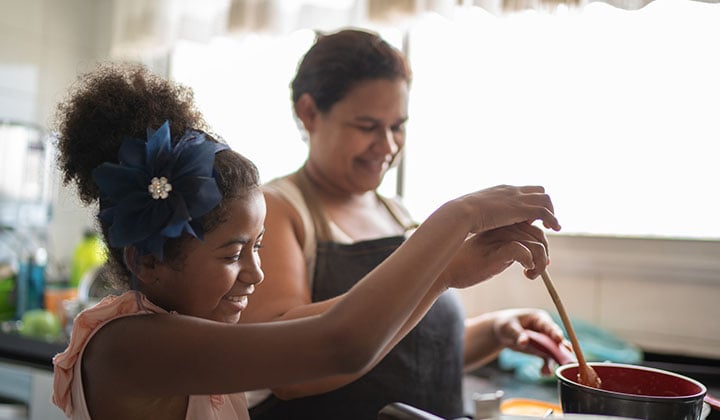
Social distancing is hard, especially when you are a kid. Their entire world has been rocked and it is hard to understand why they can’t do the things that they were able to do just a few weeks ago. Recently, there was a Parent-ish blog about five things to consider when it comes to social distancing. Of those five items, the first one was structure. As a parent, you might have already put a routine or schedule in place, but maybe you are feeling a lull and want some ways to improve the experience for everyone in your home.
Here are some ideas to consider, and talk about with your child, regarding their routine:
- If your child wasn’t a part of putting together the original plan or schedule, sit down with them and create a new one. There are several ideas and templates already available online, but the key here is to have your child involved in the process. By doing so, your child will take ownership, while also increasing their self-confidence and their sense of value. Children thrive with routines and it is key to return the stability to their lives. Allow them to consider what outdoor time, creative time, reading time or even chore time would look like. Let their creativity shine through.
- Visit your child’s school website, and make sure you are receiving emails or other communication. Many districts, schools and teachers are scrambling right now to offer some online curriculum and are coming up with creative ways to remain academically engaged with our kids. In addition, several are also putting programs in place to provide meals during this shutdown period for those in need. There is a lot happening (& changing) every day, so make sure you are staying connected and informed of what is available through your kid’s school.
- As a part of the schedule, make sure to include a list of independent activities that kids can do while you are getting things done. There will be times when your child is going to need to “teach themselves” because you have work and home obligations. Schedule independent activities, like creating a play with costumes or building a cardboard fort out of boxes, during times when you need to devote your attention to work. If you are still working outside of the home, talk to your child’s care provider about opportunities for independent activities. Regardless of your situation, times of independent learning are still great for your child.
- Connect daily chores/activities to academics. The most successful home-schooling programs connect daily activities back to academics. Cook dinner together as a family or take the time to have your child help you make lunch. The kitchen is a built-in math classroom filled with a variety fractions and conversions. Additional household tasks include sorting the laundry by colors, organizing toys into types or sizes, planning a budget together or even explaining how to do your taxes.
- Have your child keep a journal of their experiences during this historic time. If you have younger kids, have them create a picture journal. Journaling is a great way to document facts, thoughts and feelings. They can also add some photos and ask other family members to contribute. Future generations might learn of this experience through your child’s eyes and words, but it will also be a great reminder of our strength and resilience. The lessons your child learns during this time might serve as the motivation that fuels their future passions and accomplishments.
- Read with your child every day for at least 20 minutes. Just taking time to read and connect with your child every day makes them feel secure. It can also strengthen your personal bond by creating an environment where you can have a conversation about the story and talk about the lessons learned. In addition to you or your child doing the reading, several popular children’s authors and celebrities are now offering a daily read-aloud through their social channels as a result of the social-distancing guidelines. It’s easy for parents to put their kids in front of a computer, tablet or TV, but when time allows, nothing can replace sitting down and reading with a loved one.
- Be social and encourage phone or FaceTime conversations. We are all being asked to practice social distancing, but it should be referred to as physical distancing. It is important we maintain our social connections during this time by taking advantage of technology to stay in communication with grandparents, other family members, friends and neighbors. There are so many opportunities to be social without the risk of physical proximity.
- Parents also need to take advantage of free online resources. Use this opportunity to tap into your social groups, online groups, blogs like this one and other great resources for childhood development. Some options that currently exist are free academic tutorials online through the Khan Academy or free books online for kids 12 and under on the GetEpic! website.
As we all know, life happens, and as it does, we are given the opportunity to become more resilient. Although the education during this time might not be formal, life-long lessons will be learned.

